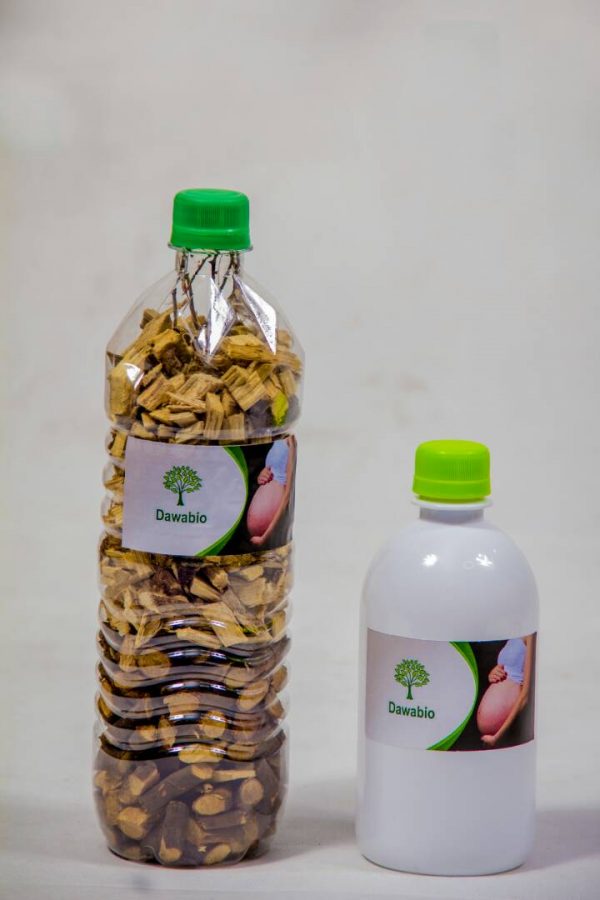You are in the right place. Dawabio, your phytotherapy center, provides you with a natural treatment consisting of herbal tea to permanently cure endometriosis. Without risk or side effects, it will regulate your cycle naturally, and you will never find this disease again. Click on this image to discover the product.

Our contact: +229 99 546 463.
The causes
Various theories have been developed to explain endometriosis. Most use the notion of retrograde flow . During menstruation, the upper layers of the endometrium break off and are normally excreted from the body. Tissue and blood are forced out by muscle contractions. In some cases, however, the flow is reversed and goes from the fallopian tubes to the ovaries. This is how endometrial cells could reach the ovaries and pelvic cavity, areas outside the uterus.
Retrograde flow is not the whole story, however, as it often occurs in women who do not have endometriosis. Another theory is based on disorders of the immune system. According to this thesis, the body would not be able to locate or destroy the endometrial tissue that would be outside the uterus. There are notable differences in the immune system of women with endometriosis, but their significance is still unknown.
Endometriosis possibly has a genetic component. Daughters and sisters of women who suffer from endometriosis are at a slightly increased risk of developing this condition.
Other theories include spread through blood or lymphatics and also the possibility that healthy tissue lining the abdominal cavity will turn into endometrial tissue.
Symptoms and Complications
Symptoms of endometriosis include:
- pelvic pain;
- pain during intercourse;
- changes in menstruation;
- pain and cramping during menstruation;
- painful urine or bowel movements during menstruation;
- infertility.
Many of these symptoms are also associated with other medical conditions. The severity of the symptom is not necessarily related to the amount of tissue present outside the uterus. Some women who have endometriosis throughout the pelvis have no particular sensation, while others with very limited symptoms experience excruciating pain.
Period pain that has been bearable for years, but increasing in intensity, may be a sign of endometriosis.
Sometimes cysts and scar tissue form around the vagina in the pelvis, making sex painful. These pains sometimes indicate a case of endometriosis, but this symptom can also be caused by other conditions. In women with endometriosis, endometrial tissue often ends up reaching one or even both ovaries. It may then form cysts called endometriomas.
Why does it make you infertile?
Women with endometriosis usually have difficulty getting pregnant. This is also a reason for frequent gynecological consultation which then leads to the diagnosis of the pathology. The fertility problems encountered are explained by the fact that the presence of scar tissue in the fallopian tubes considerably reduces the chances of fertilization. You should also know that endometriosis is a risk factor for ectopic pregnancy. Be careful, however, not to confuse infertility and sterility. Endometriosis is not inevitable. Taken effectively, many women manage to get pregnant naturally.
TRY CASTOR OIL FOR FIBROID
Endometriosis: what impact on fertility?
Conventional data estimates that 35 to 55% of patients with an infertility problem have endometriosis and about 30 to 50% of women with endometriosis will have an infertility problem.
A team of London researchers 1 has shed light on a mechanism that would explain the relationship between endometriosis and infertility.
They thus extracted peritoneal fluid from the abdomen of six women diagnosed with endometriosis and six unaffected women. This fluid is in contact with the fallopian tubes. These "tubes" contain epithelial cilia on their surface which will gently bring the ovum along the tubes, until it meets a sperm.
By observing the effect of the fluid on fallopian tubes taken from patients who had undergone hysterectomy for fibroid, they found that the frequency of ciliary vibrations of the tubal epithelium was lower (by 24%) with the fluid emanating from it. sick women.
This inhibition of the motility of the epithelial cilia could explain the infertility problems of women with endometriosis. If the inhibiting substances are identified, we can hope for a specific treatment tomorrow.
The Endometriosis is often diagnosed at an infertility evaluation. This disease is often associated with infertility, but not all women with endometriosis are affected, 30 to 40% face an infertility problem.
Treatment and Prevention
Endometriosis is treated with medication, laparoscopic surgery, or traditional surgery. The choice of treatment depends on the person and a number of factors including the woman's age, the severity of her symptoms and whether she wants to have children.
Nonsteroidal anti-inflammatory drugs (NSAIDs), including naproxen * and ibuprofen can be used for pain relief. They do not, however, treat the underlying causes of the disease. Although Health Canada does not approve the use of combined oral contraceptives for this purpose, these can also be used. In this case, rather than taking the pill for 3 consecutive weeks followed by a one-week stop, the contraceptive is prescribed daily. For most women, this treatment will eventually stop menstrual bleeding. Contraceptives containing only progesterone can also be used.
Endometriosis can also be treated with drugs that regulate the menstrual cycle, causing a period stop that mimics that of menopause. These drugs include danazol, buserelin, goserelin, leuprolide, nafarelin, and triptorelin. These cause the endometrial tissue to shrink which helps relieve some symptoms such as pain.
Laparoscopy and minor surgery are sometimes done to remove endometrial tissue from places where it shouldn't be forming, such as the pelvis, for example. During laparoscopy, the doctor uses an electrical device or a laser to burn the endometrial tissue. Laparoscopy is a less invasive technique than traditional surgery (e.g. hysterectomy) and it can be done as outpatient surgery (without the patient being hospitalized). Larger, more encapsulated growths sometimes require traditional surgery.